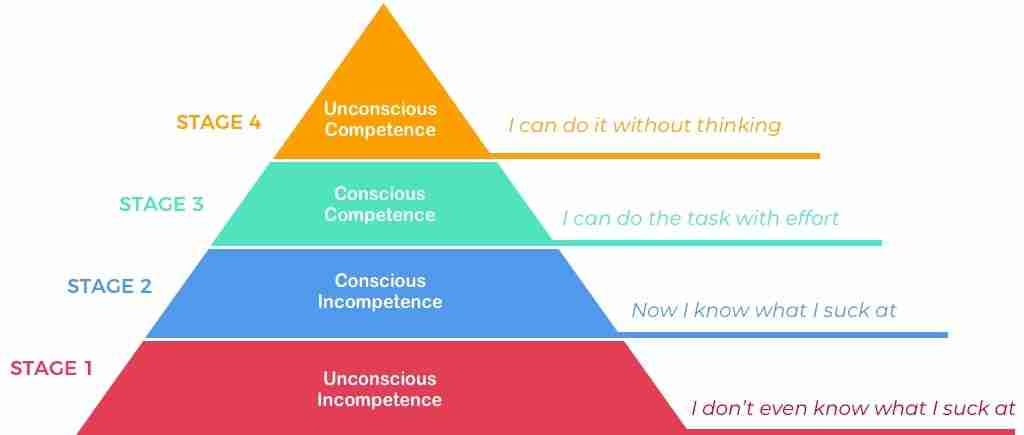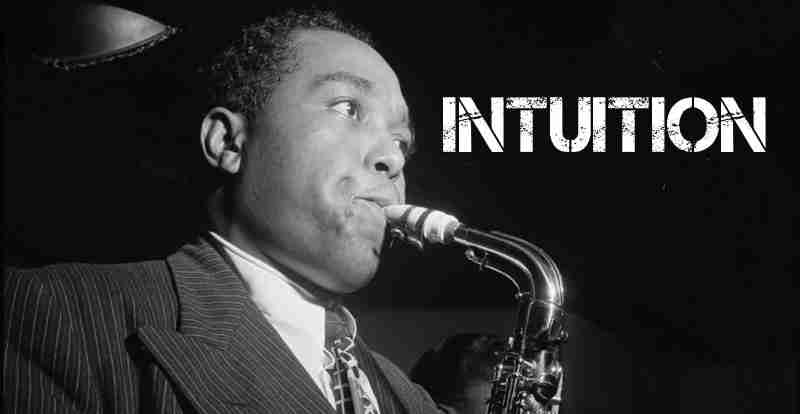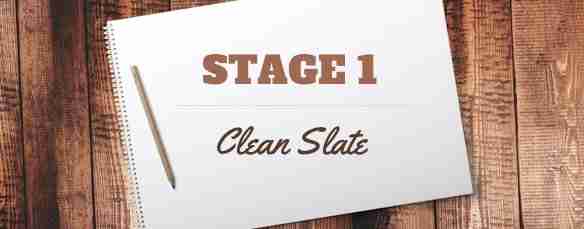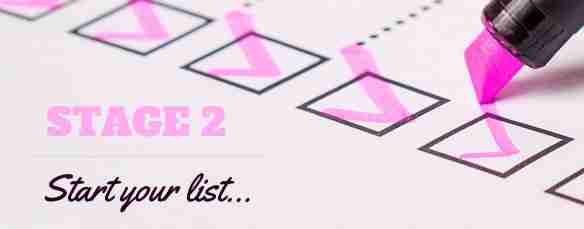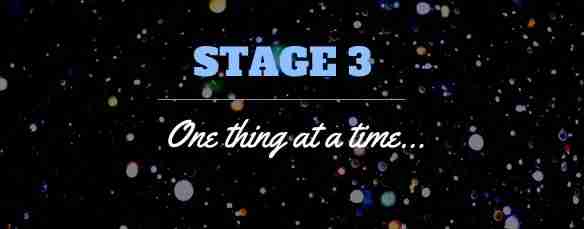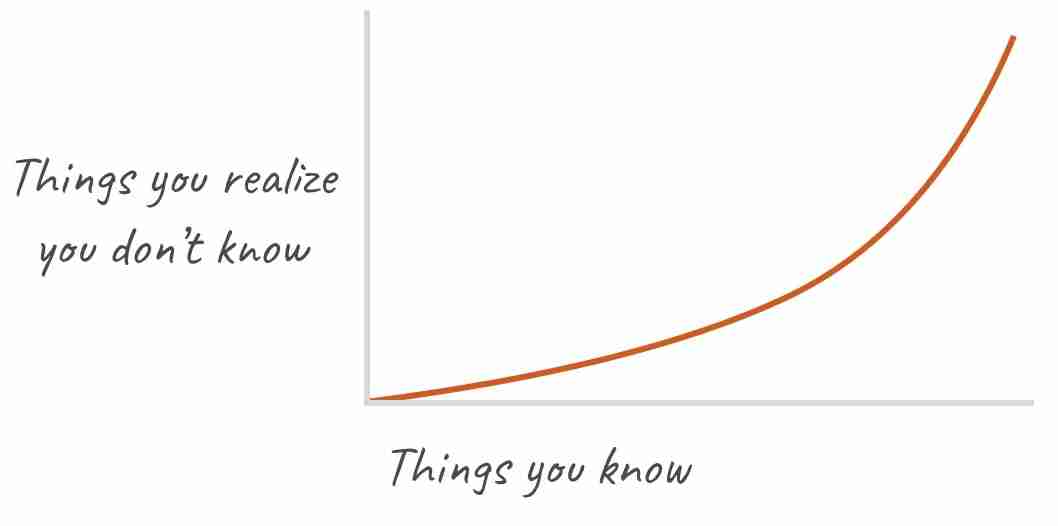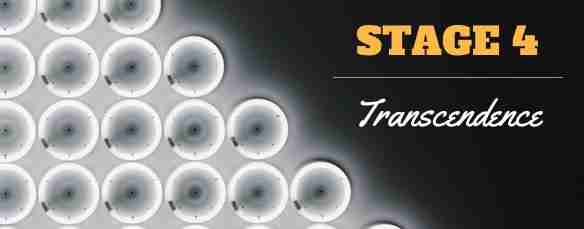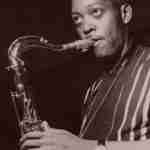Why is learning how to play jazz so hard? Is it that there are a million tunes to know? Or the thousands of great jazz solos to transcribe? Or is it all that crazy music theory, the mental aspects behind a jazz standard that make it so difficult? All of these challenges make learning jazz hard, but it’s not any one single thing that makes it this way…it’s actually many subtle little things and how they all fit together…
When you’re learning to play jazz, it often seems like you’re getting nowhere – like there’s so much to work on all the time. And that’s just the reality of it…
There actually is a never-ending pile of things to work on. And because of this endless work, it can feel like you’re never progressing, like you’re hitting a dead-end, or wondering when you’ll finally make any significant improvement…
But just like anything that you want to get better at, you have to approach it methodically, with a clear plan. You have to understand where you are and where you want to go.
When it comes to playing jazz, finding these end-points and everything in between is not always obvious, but with the right model and process of learning in your head, you can more easily understand where you’re at and define the necessary steps of action you need to take to move forward.
Enter The Four Stages of Learning – an easy to use and apply model to understand how we learn and progress through the process of acquiring a desired skill.
When understood and utilized, this framework will help you approach anything you want to learn in a more effective and productive manner by making sure you’re solving the right problems to achieve your goals and heading toward total mastery of the skill.
The Four Stages of Learning Any Desired Skill or Set of Skills
Developed in the 1970s by Noel Burch, an employee of Gordon Training International, The Four Stages of Learning outlines a framework for becoming competent at any new skill.
It suggests that people are initially unaware of how little they actually know, or in other words, they’re unconscious of their incompetence. As they recognize their incompetence, they consciously acquire a skill, then consciously use it. Eventually, the skill can be utilized without it being consciously thought through: at this final stage, the individual is said to have then acquired unconscious competence.
When I first stumbled upon this model, I thought…
“Wow! That’s exactly how jazz improvisation is! When we first start to learn something, we tend to over-estimate what we already know, and underestimate how little we actually know. And, because of the real-time nature of jazz improvisation, it’s not only a good idea to get the information we’re learning to the point where we don’t have to think about it…it’s a requirement!”
I was just blown away by how much we could gain as improvisers if we could frame our practice in terms of this learning model…
You see, when we begin to learn a new skill having to do with jazz improvisation, not only do we start out by knowing very little, we actually start out by not even knowing what it is we don’t know!
And gradually, as we progress through The Four Stages of Learning, we MUST ultimately attain a level with the skill where we can execute it with zero effort or thought.
What’s so interesting about this model of learning is that it articulates these endpoints and the transition between them in a most elegant way by using two pairs of contrasting ideas:
- Incompetence versus Competence
- Conscious execution versus Unconscious execution
The model overlaps these contrasting pairs with one another to create the 4 distinct stages of learning.
Notice how each stage changes as you progress from Stage 1 to Stage 4:
- STAGE #1 – Unconsciously Incompetent
- STAGE #2 –Consciously Incompetent
- STAGE #3 – Consciously Competent
- STAGE #4 –Unconsciously Competent
In Stage 1, you start out incompetent and unconscious of how incompetent you actually are – in other words, you don’t know what you don’t know.
Then in Stage 2, you become increasingly aware of the things you don’t know, so over time, you become consciously aware of the deficiencies that make you incompetent.
And as you practice even more to Stage 3, you become better at the particular skill(s) you’re giving attention to, gradually becoming competent when using conscious effort…so you can accomplish the task at hand, but only with a bit of focused concentration.
Slow practice and hard work leads to being able to perform the skill with less and less conscious effort, until eventually, you’re close to zero effort where you enter Stage 4 – you barely have to think and the necessary information, actions, and reflexes are automatic. Things become intuitive. You can perform competently without thinking, so you’re unconscious of every little thing you have to do to make it happen.
So how do The Four Stages of Learning apply to jazz improvisation? Is learning how to play jazz the same as learning any other skill?
I wish it were that easy, but not exactly…
Using the fours stages of learning to understand why playing jazz is so hard
Listening to one of your heroes like Clifford Brown, Ella Fitzgerald, or Hank Mobley, you hear what sounds like a perfectly architected solo…but this end result is actually an illusion – many concepts, fragments of language, melodic techniques, and countless other bits of knowledge are skillfully pieced together to construct what appears to be a cohesive whole.
It’s gaining mastery over all these tiny pieces and putting them together that makes learning jazz different and more challenging than learning other things…
Playing jazz is not a singular skill. It’s groups of MANY interconnected skills that each contain MANY micro-skills. And what’s more, you can keep improving upon EVERY little piece of the puzzle throughout your life.
For instance, a few important skills that you need to develop to be a competent jazz improviser are learning tunes, transcribing, instrumental technique, and ear training…
And within each of these skills, there are many micro-skills, for example, within the skill of “learning tunes,” there are countless micro-skills, including…
- Hearing chord changes from a recording
- Acquiring jazz language
- Understanding song form
- Understanding music theory and common chord progressions
- Having language for each chord
- Being able to effectively play over specific chord progressions
See how there are many many micro-skills within the one skill of “learning tunes”?
It’s both this “groupings of interconnected skills containing micro-skills” concept, and the fact that you can keep improving indefinitely at every single little piece of the puzzle that make jazz more difficult to achieve than most other skills.
But, just because playing jazz at a competent level may seem difficult to attain, it does’t mean that the daily work is actually that complex or difficult. It’s just a matter of understanding what to focus on, how to focus on it, and where it all fits together.
Using the model of The Four Stages of Learning can help you get your head around all of these questions so you can make strides quickly.
How to apply the four stages of learning to a jazz standard
You can of course use this model to learn anything you want, but today we’ll apply it to a common task we’re all familiar with: learning a jazz standard.
Say I want to learn to perform the tune There Will Never Be Another You.
I’ve been listening to Dexter Gordon play it over and over, and I decide that it would be great to add this tune to my repertoire.
How would I use The Four Stages of Learning to help outline my plan of attack to not only “learn” this tune, but to get it to the point where I could competently perform it?
Using The Four Stages will clearly illustrate how we can progress from knowing absolutely nothing, to being able to perform the tune without even having to think about it.
Let’s look at the details of each stage and see how this process assists us and structures our work.
Stage #1: Admitting You know nothing
So much of the time when you go to learn a jazz standard, you’ll have preconceived notions about it before you even start to approach it…
Maybe there was a time when you played through the song a bunch of times with a play along recording or perhaps your teacher taught it to you. Or, you might have even tried to learn it by ear at some point in the past but didn’t finish…
Surprisingly, all this exposure to a tune before you actually invest the time and energy to learn it the right way can actually hinder your ability to play it well.
It’s a little difficult to explain, but let’s give it a try…
Whether it’s acquiring incorrect chord changes from The Real Book, or simply playing with a shoddy play along recording over and over, these actions create and ingrain a specific “feel” or “vibe” of the tune in your mind, which in-turn greatly affects how you play it.
To understand what I mean, run through this little mental test…it’s as simple as answering this easy question…
Simply tell me if you think the classic jazz standard, Have You Met Miss Jones is a lame tune. Go on. Nobody’s judging you. Just be honest. What do you think of this tune?
If the answer is yes I think it’s a lame tune then I’d be willing to bet that like 99% of people, you learned it from a play along recording, the Realbook, or a lead-sheet. And, that you’ve probably never studied and spent dedicated time with some amazing recordings of it.
Why am I able to make this prediction?
Because if you think the tune is lame, then chances are you learned it in a lame way, from a lame source and absorbed the lame vibe from that version.
Believe me, I was part of this population too until it dawned on me that the sources I was using in my practice had a much greater affect on me than I realized…
This of course is not always the case, but I bet if you think Have You Meet Miss Jones is an awesome tune, then chances are you learned it in an awesome way, from an awesome recording like this…
A source that inspired you. Something that made you appreciate the beauty of the tune. Something that made you want to learn it in the first place!
So, if you don’t feel these things for a tune, chances are that you have some aural and mental baggage in your mind from the past that needs to be forgotten, relearned, or reframed in a different way…
It might sound odd, but our memory is a POWERFUL thing, and the information we feed it gets processed and ingrained deeper than we might imagine.
In Stage 1, It’s time to hit the reset button. Rather than beginning with half-baked inferences or incomplete information, use the Zen concept of beginner’s mind and start with a clean slate.
Get rid of your assumptions and approach the tune as if it’s the first time you’re learning it because this time, you’re ACTUALLY going to spend the needed time and effort to learn the details of the tune that are required to play it well.
At this point you’re unconsciously incompetent, but not for long…
Stage #2: Defining what it is you don’t know
When most people go to learn a tune, they jump right into learning it without a plan, and this can work. But, with a plan, you’ll generally become more proficient in much less time.
A good plan starts with understanding the nature of the problem before seeking out solutions. And in the case of learning jazz standards, this is all about finding the gaps in your knowledge and bringing them into the light.
To get from Stage 1 to Stage 2, you have to determine what exactly it is you don’t know…You can think of these as your “basic requirements” to become competent.
So if I’m trying to become competent at performing There Will Never Be Another You I have to first think what it is that I don’t know…
So, what do I NOT know?
- The famous recordings of the tune
- The form of the tune
- The common keys the tune is played in
- The accurate chord changes to the tune
- The accurate melody to the tune
- How the melody and harmony relate
- How to play simple chord voicings of the chord changes at the piano
- The places in the chord changes that give me trouble
- The places in the chord changes that I have minimal or no language for
- Common chord substitutions or alterations
This is by no means a complete list, but you get the idea….
Defining the things you don’t know for anything you want to learn is the ONLY thing you want to focus on during Stage 2. Not FULLY understanding what it is you don’t know will lead to incomplete or poor results.
By spending a little time to list out everything I think I don’t know, and remaining aware during the process of learning so I can ADD to this list, I will constantly understand what problems I’m actually trying to solve.
You’re now consciously incompetent which means you’re on the right path to becoming competent, quickly and effectively.
Stage 3: Attaining basic competence
In Stage 2, you defined a preliminary list of what it is you need to work on to become competent…
But just when you thought you had it all figured out, you’re thrown a curve ball because the nature of the problems and things you don’t know expand and change as you go deeper into the learning process.
In a way, the more information you learn, the more you become aware of how vast the information is that you actually don’t know…
So at this point, you’re actually still in Stage 2 but moving toward Stage 3 because you’re still figuring out the things you need to know, like the places in the chord changes that need extra work.
Th transition from Stage 2 to Stage 3 could take a day, a week, a month, or even many years…and it all depends on these two things:
- How well you’re defining the things you don’t know
- How well you’re approaching the things you don’t know
If you’re brutally honest with yourself and highly observant, you can quickly articulate the things you don’t know for a tune. For example, If you’re learning There Will Never Be Another You, as you begin to work on it, you might realize there are huge gaps in your jazz language and you don’t know :
- Clear and Interesting Major language – The first two bars of the tune are major chords. If all you have is a major scale at your disposal, it’s going to be quite difficult to make an interesting melodic statement.
- How to effectively play over half diminished chords – In the third measure of this tune you’ll encounter a half diminished chord and for some reason, the half diminished chord is tricky for most people. If you haven’t learned language or spent time practicing these chords, you’ll need to do so if you wish to play this tune well.
- How to play over a dominant chord with a #11 – Later in this tune, you’ll encounter the II7 chord which many times you’ll hear with a #11 voicing. Emphasizing this color in context is part of the sound of the these chord changes.
- How to vary my ii V language – There are several ii Vs in these chord changes and if every time you’re getting to them and playing the same lines or concepts, then it’s time to figure out some new material and ideas.
Or maybe you realize as you’re practicing There Will Never Be Another You that your ability to hear chord changes from the recording is limiting you, so you might not know:
- How to hear the sound of a major chord 7 when it’s voiced – You might have worked on hearing major chords in root position, but when they are voiced you’re having difficulty.
- What the sound of a dominant 7 #11 chord is – You might be familiar with the sound of a dominant chord, but become completely lost when the color changes with the #11.
- What the chord changes are in the last four bars of the tune – In many tunes you’re working on, you might “kind of know” what’s happening in the chord changes, but do you know exactly what’s happening? If there are questions in your mind about what the chord changes are, you need to add them to your list of things you don’t know.
So the first step is to identify and highlight the crucial elements of a tune that you don’t know or that need extra-special attention…
Then, once you clearly detail them, to move from Stage 2 to Stage 3, you tackle them one at a time.
For example, let’s take one of the first items on our list through all The Four Stages: “How to effectively play over half diminished chords”
- STAGE #1 – Unconsciously Incompetent: In this stage, I don’t even know yet that proficiently playing over half diminished chords is vital to playing successfully over There Will Never be Another You. I also don’t know how much I actually suck at these chords yet. I’m completely in the dark because I have no information to work with, or worse yet, I have misinformation from the Realbook, or other poorly constructed lead sheets. I have to rid myself of my preconceptions about this tune and start from scratch.
- STAGE #2 – Consciously Incompetent: In this stage, it will become apparent to me that playing over half diminished chords is essential to playing successfully over There Will Never be Another You. And I’ll come to the lovely conclusion that I actually really suck at these chords. And it will happen like this… As I begin to listen and study the tune, I’ll realize, “In measure 3, that sounds like a half diminished chord…” Then, I’ll get even more feedback I can use when I go to solo over it, realizing, “Wow, I’m terrible at playing over that measure. I have no language to draw from and don’t play anything of meaning.” All of this information will help me figure out and define my plan to improve.
- STAGE #3 – Consciously Competent: In this stage, I will acquire language over half diminished chords, while creating and drilling exercises over them. Then, I’ll practice integrating and applying my half diminished language and concepts to the chord changes of There Will Never be Another You. With some hard work, I will begin to be able to competently approach the half diminished chords in this jazz standard while using some conscious mental and physical effort.
- STAGE #4 – Unconsciously Competent: In this stage I’ll drill my exercises, language, and ideas so much that I’ll be able to execute all these techniques with almost no effort. Soon I’ll be able to play over the half diminished chords in There Will Never be Another You without even having to think about it.
See how the entire process is applied to one specific problem/micro-skill which will help me reach the bigger goal/skill of playing well over the whole tune?
When there are no problems, questions, or difficulties in your mind about the melody, the chord changes, and how to improvise over each chord and progression…well, you’re on your way to becoming competent with the entire tune.
And with concentrated effort and time, you’ll be consciously competent which means you’re on the right track…
Stage 4: Transcending mental and physical effort
But being competent is not enough…
In playing jazz, you have to be able to execute every minute detail without thinking because jazz is a language, and If you want to speak a language fluently, you have to be able to converse without effort.
Just as you would learn Spanish or German, you have to immerse yourself in the culture and speak the language constantly, until it’s just second-nature.
What this means in terms of learning a jazz standard like There Will Never Be Another You is that you have to go through all those “little” things you worked on to become component in Stage 3 and practice them even more.
Often people wonder how you get to the point where you’re free and can be creative in the moment and the truth is, there’s no secret. It’s simply repetition and drilling the information over and over in a systematic and deliberate way.
With time and practice you’ll become unnsciously competent which means you can perform the tune without having to use thought and effort. The chord changes are just there. Your language comes out naturally. Your melodic lines flow easily.
But even if you take a tune through the 4 stages of this process, you’re not done. In fact, you’re never truly done because you can always improve and expand upon how you play a tune.
Assuming you want to keep improving, you can always take the tune through this process again and again, each time revisiting more things you don’t know and figuring out how you’re going to integrate them into your playing until you can use them without thinking.
The important takeaway is that this model, The Four Stage of Learning, gives you a framework to systematize the craziness of learning tunes, transcribing, improving your technique, or ANYTHING else that you want to work on, so you can make the most of your practice time and improve quickly.
No more wondering how you get from knowing nothing to having all the necessary knowledge at your fingertips. By making use of The Four Stages of Learning to clearly understand what it is you want to accomplish and to define the actionable steps you need to take to get there, you’ll gradually see your musical dreams turn into reality.


